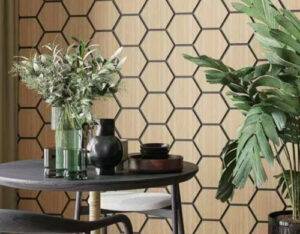If you’re considering a renovation or a remodel, one of the key decisions you’ll need to make is what materials to use. When it comes to walls, you may be wondering if slat walls are good for acoustics.
Slat walls are a popular choice for modern and industrial-style interiors. They’re made of wooden slats, which are arranged vertically or horizontally, leaving a small gap between each one. These walls have a distinctive look that can add texture and interest to any space. But, are they good for acoustics?
In this article, we’ll explore the acoustic properties of slat walls and how they can impact the sound quality in your space. We’ll also provide some tips for optimizing the acoustics in a room with slat walls.
How Do Slat Walls Affect Acoustics?
The answer to whether or not slat walls are good for acoustics is…it depends. Slat walls can have both positive and negative impacts on the acoustics in a room, depending on how they’re used.
On the one hand, slat walls can help to diffuse sound waves, which can improve the acoustics in a space. The small gaps between the slats create a pattern of reflections and absorptions that can help to break up sound waves and prevent them from bouncing around the room. This can help to reduce echoes and improve speech intelligibility.
On the other hand, slat walls can also create a lot of reverberation in a space. If the slats are too close together or the wall is too large, the sound waves can get trapped between the slats and bounce around the room, creating a boomy, echoey sound.

How Can You Optimize Acoustics in a Room with Slat Walls?
If you’re planning to use slat walls in a room, there are a few things you can do to optimize the acoustics and minimize any negative impacts.
Use Absorptive Materials
One way to counteract the reverberation caused by slat walls is to incorporate other materials that absorb sound waves. This can include things like curtains, acoustic panels, or upholstered furniture. These materials will help to soak up excess sound energy and prevent it from bouncing around the room.
Space Out the Slats
To prevent sound waves from getting trapped between the slats, it’s important to space them out correctly. The ideal spacing will depend on the size of the slats and the size of the room, but a general rule of thumb is to aim for a gap of around 2-3 inches between each slat. This will allow the sound waves to pass through the gaps and prevent them from getting trapped.
Limit the Size of the Slat Wall
If you’re concerned about the acoustics in a space, it may be a good idea to limit the size of the slat wall. A smaller slat wall will be less likely to create excessive reverberation and will be easier to manage acoustically. You can also consider breaking up the wall with other materials, like glass or solid panels, to create a more varied surface.
Use Sound Masking
Finally, if you’re still experiencing acoustic issues in a space with slat walls, you can consider using sound masking. This involves playing a low-level background noise that will help to cover up any unwanted sound reflections or echoes. You can use white noise machines, music, or other sound sources to create a comfortable and acoustically balanced environment.
For further questions, please contact us at dayin@dayinacoustics.com.



